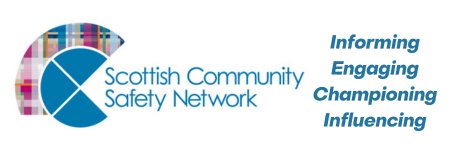Dawn Exley, National Development Officer
When I started with the Scottish Community Safety Network five years ago, and was new to the community safety sector, I learned about a rich history of tireless work to keep communities safe. I learned about a sector that was one of the first to develop effective multi-agency approaches and partnership work and had a deep commitment to prevention.
And while harking back to the ‘good ole days’ can rightfully set eyes rolling, there are times when it has its place and times when it is crucial to take stock and revisit original ambitions before they disappear. Now is that time. When we are on the precipice of another recession, can we take a moment to reflect on the lessons learnt over the last 14 years of austerity and try to avoid some of the same mistakes?
In the last few months, the SCSN Development Team has had the privilege to visit and speak to community safety teams across the country as part of our ‘Reconnect Roadshow’. Through the conversations that have been had, a few things are particularly striking.
1) that with what little they have –community safety teams continue to deliver using innovation and a strong legacy of partnership work.
2) that there is sheer exhaustion after over a decade of ruthless austerity cuts to their services as well as a recent pandemic and looming cost of living crisis, and;
3) the shared frustration in the knowledge that cuts to community safety, and in many circumstances that means prevention activities, is a false economy which creates problems downstream and in many respects is undoing areas of progress.
A few good examples of the drawbacks of cutting community safety are:
Community Wardens – after the Anti-social Behaviour Act (2004) came in, there was a lot of enthusiasm for the role of the community warden. The role was deliberately a non-enforcement role, aimed at building relationships and trust with the community to aid cohesion. These roles were well valued by the sector but were absolutely decimated in the cuts, and of those that remain, most have been merged into an enforcement role (e.g. ASB officer, Dog Warden, Parking Attendant) out of financial necessity. As one community warden said to me recently, “It used to be about getting to know the community, now it’s mostly responding to incidents in cars. We have lost the community touch”
And on a similar note of community cohesion, we are very concerned to hear early indications that mediation services are already being slashed in a few areas. Some believe the difficultly in proving the impact of mediation has been a key reason the services have been targeted for cuts. Prevention may be hard to measure, but we are well beyond the understanding that it is a key component to lasting change.
Another area that has taken a hit over the last 14 years has been home safety. Indeed, many local authorities used to have dedicated Home Safety Officers, but this has diminished greatly. With accidents at home continuing to be a leading cause of preventable deathfor children and older people in the UK, here at SCSN, we feel there needs to be urgent action to combat the issue. In the absence of significant dedicated resource in the sector, we facilitate and host Home Safety Scotland, to help community safety practitioners stay up-to-date and engaged with home safety. Please contact Kevin.Chase@scsn.org.uk if you would like to be involved.
Finally, we cannot talk about cuts to community safety without mentioning the dramatic loss of Partnership Analysts. From our 2021 research on Evidence Informed Planning, we discovered that not all community safety partnerships have access to dedicated or even shared analytical resources, with over half of the research participants reporting having no data analysis skills and expertise locally. And of those who still do, the typical situation is there are “now just a handful, compared to around 20 a few years ago” leading one participant to say they are “basing decisions on what people think rather than what they know for sure”.
So while we know that community safety is not always top of the political agenda, and that in Scotland, community safety partnerships are not even a statutory requirement – in a policy landscape that continues to espouse the benefits of prevention and early intervention, it is plain to see that cuts to community safety services are cuts to just that. At SCSN, we understand the Scottish Government and local authorities have the unenviable task of taking austerity measures in the coming months and years, but we would like to make the plea that this time, we think smarter before cutting community safety services – the ripple effects of which would be broad, far reaching and unintended.
